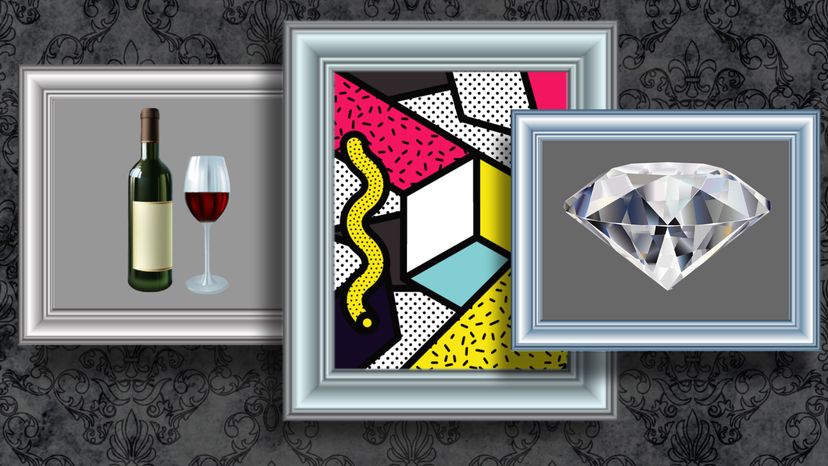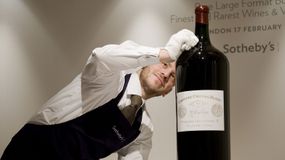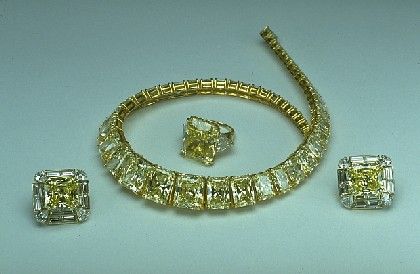
Let's say you're on a first date and anxious to make a good impression. The waiter arrives with the wine list and your date asks you to order a bottle for the two of you. You know virtually nothing about wine, but you don't want to look like an idiot or a cheapskate, so you quickly scan the list and point to the most expensive bottle on the menu.
"Ah, the Chateau Merlot," booms the waiter, with a big smile. "Very good, sir."
Advertisement
Yes, it's ridiculous to spend $100 on wine that's only marginally more tasty than a $20 bottle, but it's actually standard human behavior. More than 100 years ago, an American economist named Thorstein Veblen coined the phrase "conspicuous consumption" to describe this very thing. You pick the expensive bottle of wine not because it's five times better than the cheaper bottle, but because you want to send a signal to your date: "I have good taste and I can afford it."
Wine is just one example of what's known as a "Veblen good," named for any good or service that defies the standard relationship between price and demand. When price goes up, demand is supposed to go down," explains Ori Heffetz, an economics professor at Cornell University's SC Johnson Graduate School of Management. But for Veblen goods like wine, fine art, jewelry and cars, the rules change.
"The high price is actually part of the attractiveness," says Heffetz.
In Veblen's classic 1899 book, "The Theory of the Leisure Class," he says that high prices have two functions. The first is basically marketing. Since winemakers and clothing designers know that most consumers don't have the knowledge or interest to figure out which products are objectively better than others, they use price as a shorthand for quality. Consumers assume — correctly or not — that a higher sticker price corresponds to a higher value.
The second function of high prices is what Veblen called conspicuous consumption. In this case, the consumer's decision to buy the more expensive option has little to nothing to do with actual quality and functionality of the product. The whole point is for others to see you drinking the expensive wine, wearing the expensive clothes or driving the fancy car.
"When other people see me driving an expensive car, that's a benefit in itself," says Heffetz. "They might think that I'm more successful or that I'm more desirable as a mate."
And, of course, those two functions of high prices often work together. Just look at the recent college admissions scandal, in which wealthy celebrities were caught trying to buy admission for their children into elite colleges. One of the ways that schools market themselves as elite is through their high tuition costs. If the University of Southern California (USC) costs more than $77,000 a year (tuition plus room and board), it must be an amazing education, right?
And because schools like USC use their high cost as a signifier of quality, so do parents. The wealthy celebrities caught up in the college admissions scandals were willing to go to great expense to win brand-name status for their kids. In their social circles, admission to USC is shorthand that their kids are smart and successful, which in turn means that they're smart and successful parents. Call it the virtuous circle of conspicuous consumption. (Unless you get caught cheating.)

Veblen first identified conspicuous consumption among the American upper classes in the late 19th century, but it wasn't until the 1970s that economists figured out exactly how it worked as a market force. In 1973, the economist Michael Spence wrote a landmark paper on signaling in which he showed how our consumer choices send important signals that have real economic repercussions.
Spence won the 2001 Nobel Prize in Economics by explaining how education is used as a signal for productivity in the labor market. The logic is pretty simple: If an employer is looking to hire a new worker, he or she will use the status of the applicant's college (in which tuition cost is a variable) as a shorthand signal of applicant's relative productivity as a worker.
Heffetz cites the classic example of someone looking to hire a lawyer. The assumption is that a good lawyer wins cases and therefore has a lot of money. So, if one lawyer shows up driving a 2004 Honda Civic and the other arrives in a brand-new Mercedes, they are sending two very different signals. If the client defines a good lawyer by how rich he or she is, then the Mercedes lawyer benefits from conspicuous consumption.
Of course, a lousy lawyer could still drive a fancy car, but there's a far higher cost for an unsuccessful lawyer to buy a Mercedes. "For the good lawyer who actually makes a lot of money, the Mercedes is pocket change," says Heffetz. "It's cheaper and therefore more likely for a successful lawyer to send the same signal."
The larger question is, why do we bother with all of these signals anyway? Heffetz says that there's a much more efficient economic solution. Instead of buying a fancy car to show how rich you are, you could just walk around with copies of your most recent tax returns, or introduce yourself to potential clients saying, "Hi, I'm a very wealthy and successful person!"
But, of course, that's not socially acceptable. Instead, people who spend money on flashy cars or clothing can hide behind what economists call a "functional alibi." If you buy a very expensive car, for example, you can claim that you didn't do it to send the signal that you're rich and successful, but simply because expensive cars run better and are more reliable.
"But are they so much better that it's worth spending 20 times the cost of a good standard car?" asks Heffetz. "Probably not."
Advertisement


